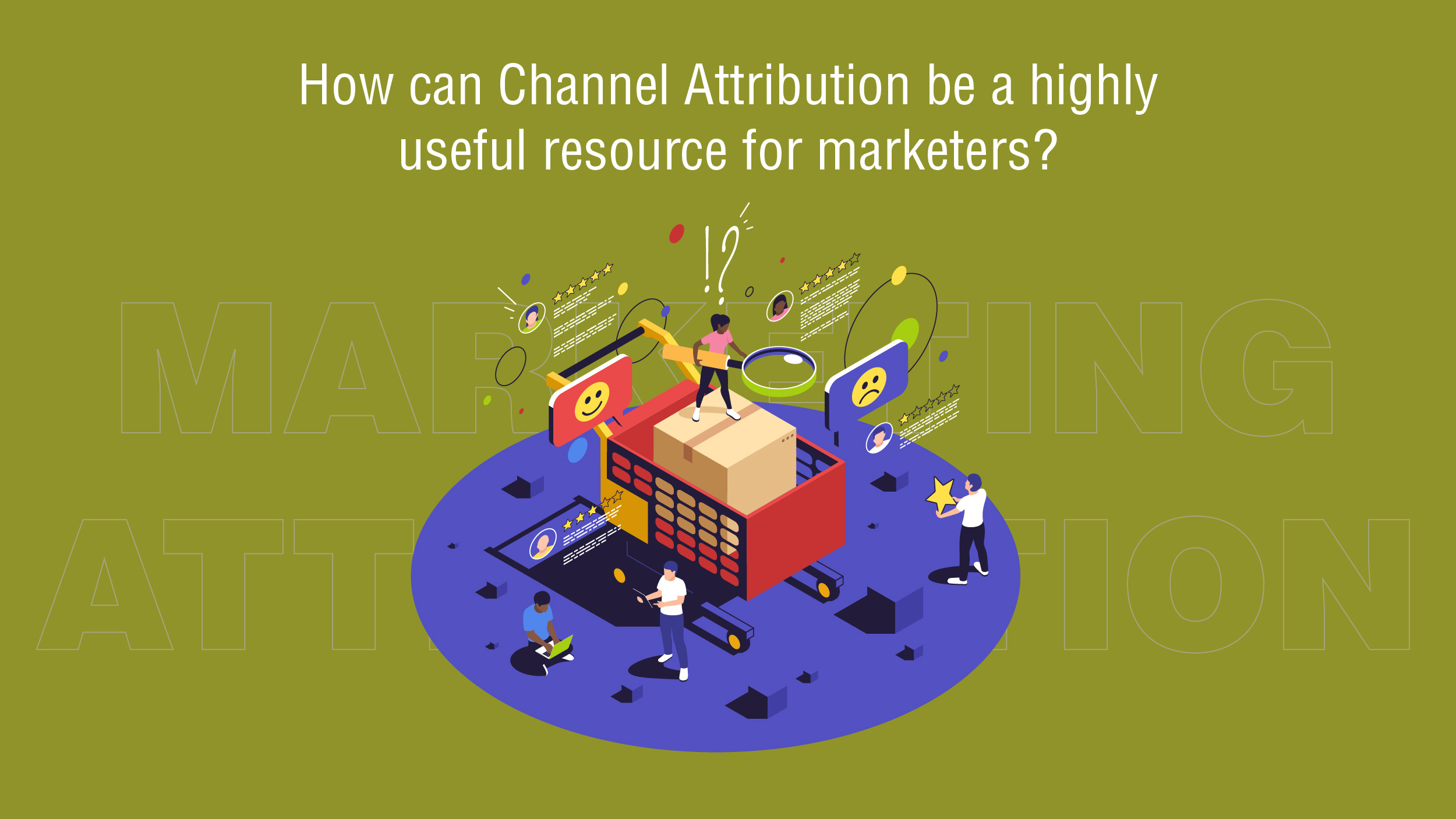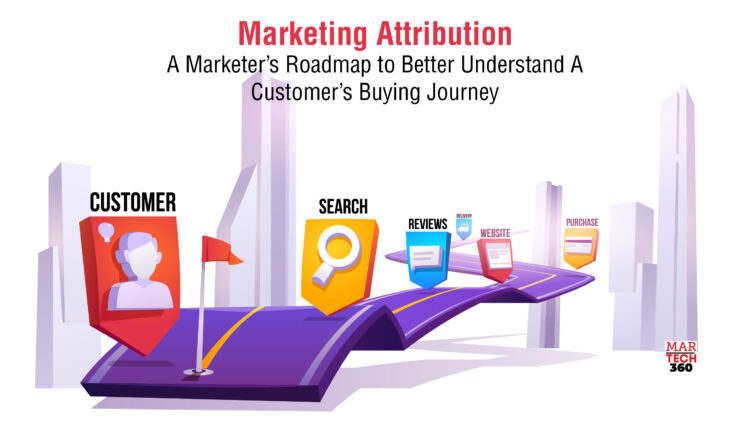Modern marketers use multi-channel strategies to carry out marketing campaigns both online and offline. Although this approach enables marketers to tailor the client journey at each stage, it also poses difficulties when determining how a certain campaign has affected marketing ROI overall. Marketing attribution is the analytical discipline of determining which marketing initiatives are driving particular sales or conversions.
Let’s have a look at how marketing attribution models are useful for marketers that add to their marketing efforts.
What is Marketing Attribution?
The evaluation of the marketing touchpoints a consumer experience along the way to a purchase is known as marketing attribution. Determine which messages and channels had the biggest influence on the choice to convert or take the desired next step. Today’s marketers use a number of well-liked attribution models, including time decay, lift studies, multi-touch attribution, and more.
Marketing teams may adjust and create custom campaigns to satisfy the individual needs of different customers thanks to the data these models provide into how, where, and when a consumer engages with brand messages. This increases marketing ROI. To guarantee that each interaction is properly valued, advanced marketing attribution solutions call for marketing teams to combine and analyze consumer data from many channels.
Marketers have noticed that a piece of collateral has a greater impact on the sale than the display ad if, for example, a consumer is exposed to a display ad and an email campaign but only converts after seeing a special promotion in the email. Then, they can invest more money into developing focused email marketing efforts. Marketing teams need advanced analytical solutions or marketing attribution tools that can reliably and quickly transform massive data into person-level insights that can be applied for in-campaign adjustments in order to attain the level of data granularity necessary for effective attribution.
You may boost your chances of converting more prospects by giving credit to your marketing channels and touchpoints by; identifying the aspects of a buyer’s journey that can be improved, evaluating the return on investment (ROI) for each channel or touchpoint, identifying the best uses of your marketing budget, and customizing your marketing campaigns and content as per your distinctive personas.
Benefits of Marketing Attribution
 In order to get advanced attribution models right, especially complicated models that assess a variety of datasets for both online and offline campaigns can take a lot of time and resources. But when done correctly, attribution provides a plethora of advantages, such as:
In order to get advanced attribution models right, especially complicated models that assess a variety of datasets for both online and offline campaigns can take a lot of time and resources. But when done correctly, attribution provides a plethora of advantages, such as:
- By displaying the touchpoints that generate the most engagements, attribution models provide marketers with insights into the optimal use of marketing budgets. This enables marketing teams to appropriately alter the budget and media expenditure.
- Effective attribution enables marketers to target the right consumer with the right message at the right time, increasing conversions and marketing ROI.
- Marketers can use attribution data to comprehend the messaging and channels preferred by specific customers for more precise targeting throughout the customer journey.
- Marketers are better able to comprehend the needs of their customers because of person-level attribution. When making modifications to the product to target the functionality that customers demand, these insights can therefore be used as a roadmap.
- Marketing professionals can fine-tune messaging and visual components as well as gain a better knowledge of how and when to communicate with users by using attribution models that can assess the creative components of a campaign.
How Do You Track Marketing Attribution?
A variety of techniques and tools can be used to track marketing attribution. It often entails gathering information from different touchpoints, including commercials, emails, social media, website visits, etc., and connecting that information to customer behaviors to determine which marketing campaign had the greatest impact on them. You can use different attribution models, such as first-touch, last-touch, multi-touch, and algorithmic attribution, to figure out which touchpoints or campaigns are in charge of producing the most sales or conversions. You can use tools like Google Analytics, Adobe Analytics, Marketo, HubSpot, or specific attribution solutions like Convertro, Bizible, or Visible to track marketing attribution. The key is to select the technology and attribution model that is most suited to your company’s needs and objectives.
How can Channel Attribution be a highly useful resource for marketers?
 To increase clicks, visits, and conversions, digital marketers frequently use all of the marketing strategies at their disposal. However, the complexity of the performance reports increases as they experiment with more channels. It can be challenging to identify the precise engagement strategies, messaging, or touchpoints that resulted in the most conversions given the complex customer journey to making a purchase. Researching the conversions that produced the greatest percentage of high-value clients is also essential.
To increase clicks, visits, and conversions, digital marketers frequently use all of the marketing strategies at their disposal. However, the complexity of the performance reports increases as they experiment with more channels. It can be challenging to identify the precise engagement strategies, messaging, or touchpoints that resulted in the most conversions given the complex customer journey to making a purchase. Researching the conversions that produced the greatest percentage of high-value clients is also essential.
Digital marketers can quickly benefit from channel attribution data in the following ways:
Deeper Insights of A Customer’s Buying Journey
Today’s consumers build a tangled web of interactions with your business by hopping from one medium to another. They interact with numerous devices, visit numerous websites, use social media, use mobile apps, respond to online communications, search through information, come across in-store marketing, and more as they go about their daily lives, making their journey far more complicated than what most businesses are able to comprehend.
With the use of attribution analytics, it is simpler to comprehend the value contributed by the numerous mobile, online, and offline touchpoints that a client uses. This information aids marketers in creating communication strategies that are far more relevant and targeted. Clear identification of a customer’s movement across various channels and mediums can be made possible with the assistance of channel attribution analysis.
A Comprehensive View Of Marketing Data
The amount of marketing data that is constantly being generated makes it difficult for marketers to identify new opportunities or predict outcomes. Channel attribution gathers and aggregates data from all the channels to help businesses understand what influences their customers’ behavior, needs, and expectations across a range of touchpoints and devices. Research must consider how one channel influences another.
Cross-channel attribution requires knowledge of this finer information about your marketing strategies and clients on a much deeper level. Plus, it gives marketers the data and information they need to forecast impending events and support them in making informed marketing decisions.
Make Informed Marketing Decisions
A survey found that many businesses said they use attribution to guide their selection of upcoming media and marketing initiatives. The direct advantage of channel attribution is that it gives marketers the ability to evaluate each campaign’s performance and contributions to customer journeys as they take place. They now have the ability to change their strategy going forward and make choices that boost engagement and conversions. The financial performance of a firm is greatly impacted by wise, effective, and prompt marketing decisions.
Optimized Marketing Expenditures
The key benefit of channel attribution is that it allows marketers to allocate resources based on the performance of different channels. It is conceivable to spend more marketing dollars on the channels that attract more valuable clients. One channel might draw a lot of traffic, but those visitors might only buy heavily discounted sale items once, and another might draw few visitors, but the bulk of them turn out to be dedicated, long-term customers. Marketers can select the distribution methods that will maximize their investment’s return.
Through complex attribution modeling, real numbers and costs related to each touchpoint can be identified. Some significant factors, such as cost per acquisition, cost of service, customer value, higher quality leads, etc., can be evaluated using channel attribution analysis. With the help of these analytics, marketers may more effectively allocate marketing spending across platforms.
Better And Greater Customer Experience
The benefits of channel attribution from the viewpoint of marketers have been addressed so far. However, the benefit of efficient attribution that is most immediately felt is improved customer experience. When a marketer is aware of the behavior, expectations, and wants of the target audience, marketing strategies naturally become more in line, relevant, focused, and engaging. This leads to increased brand loyalty, client happiness, and client engagement. Overall, both marketing effectiveness and product performance have increased.
Summing Up
The process of comprehending how marketing initiatives draw in prospects and turn them into customers is known as attribution modeling in the field of digital marketing. The most effective approach to do this is through touchpoints or contacts with your customers. Marketing reaches out to consumers in a variety of ways, such as SEO, social media marketing, and email marketing. The topic of which marketing channels are the most productive must be addressed in order to determine which ones are best for your business.


Comments are closed.